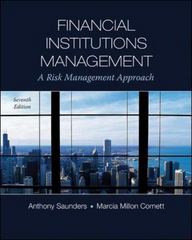HER. The thing can there to be DAVID: That makes and remember De Thibodeaux saying that the difference betwee and compound that in the not only on the principal buen previously and interest NIVER: Very goodSo, here's your next to Assuming qual amounts of principalement, which of account should produce the greater future the coming were recommend DAVID By the accounting WENNER Again, correct Bec so, I want you to prove. So let's assume that you ness2,000 ferest Beta be of which com per year, and the money is invested for three years. Account Acer EX cars compound interest. By how much will the future of countered the rest DAVID, OK, let me see what I do... Future Value of Account Notes Account Apays simple interest Future Values - Principal + Interest - Principal + [(Principal x Interest Rate) X Investment Period] = $2,000 + ($2,000 x 7%) * 3 years) Future Value of Account X Note: Account X pays compound interest. Future Valuex - Present Value x Interest Rate Factor - Present Value x (1 + Interest Rate) - $2,000 x (1 + 0.07) Future Valuex - Present Value x Interest Rate Factor = Present Value *(1 + Interest Rate) = $2,000 X (1 + 0.07) To find the interest rate factor, you can use four different ways, including multiplying it out: Interest Factor (1 + 0.07) x (1 +0.07) x (1 +0.07) = 1.2250 Or you can use exponents, and calculate it directly: Interest Factor - (1 + 0.07)) - 1.2250 Or you can use exponents, and calculate it directly: Interest Factor = (1 + 0.07)3 = 1.2250 The third alternative for solving the equations is to use a spreadsheet, and the fourth is to let a financial calculator perform the calculation. This requires that you know how your calculator functions and how to enter the following variables: Input 1 3 7 2000 Keystroke P/Y NI PV Output FV Answer P/Y indicates the number of compounding periods per year, N is the number of years, I is the interest rate, PV is present value, and FV is future value. Difference in Future Values Difference - FVX - PVA DAVID: So, what do you think? But now I've got to challenge you with one that would happen to the future values and the difference between then the counts did not pay rest? DAVIDE UN... the interest rate wereo, the interest would the future value of account would be the future value of and the difference between the two old be HENNIFER Correct You ready for De Tod's nest que HER. The thing can there to be DAVID: That makes and remember De Thibodeaux saying that the difference betwee and compound that in the not only on the principal buen previously and interest NIVER: Very goodSo, here's your next to Assuming qual amounts of principalement, which of account should produce the greater future the coming were recommend DAVID By the accounting WENNER Again, correct Bec so, I want you to prove. So let's assume that you ness2,000 ferest Beta be of which com per year, and the money is invested for three years. Account Acer EX cars compound interest. By how much will the future of countered the rest DAVID, OK, let me see what I do... Future Value of Account Notes Account Apays simple interest Future Values - Principal + Interest - Principal + [(Principal x Interest Rate) X Investment Period] = $2,000 + ($2,000 x 7%) * 3 years) Future Value of Account X Note: Account X pays compound interest. Future Valuex - Present Value x Interest Rate Factor - Present Value x (1 + Interest Rate) - $2,000 x (1 + 0.07) Future Valuex - Present Value x Interest Rate Factor = Present Value *(1 + Interest Rate) = $2,000 X (1 + 0.07) To find the interest rate factor, you can use four different ways, including multiplying it out: Interest Factor (1 + 0.07) x (1 +0.07) x (1 +0.07) = 1.2250 Or you can use exponents, and calculate it directly: Interest Factor - (1 + 0.07)) - 1.2250 Or you can use exponents, and calculate it directly: Interest Factor = (1 + 0.07)3 = 1.2250 The third alternative for solving the equations is to use a spreadsheet, and the fourth is to let a financial calculator perform the calculation. This requires that you know how your calculator functions and how to enter the following variables: Input 1 3 7 2000 Keystroke P/Y NI PV Output FV Answer P/Y indicates the number of compounding periods per year, N is the number of years, I is the interest rate, PV is present value, and FV is future value. Difference in Future Values Difference - FVX - PVA DAVID: So, what do you think? But now I've got to challenge you with one that would happen to the future values and the difference between then the counts did not pay rest? DAVIDE UN... the interest rate wereo, the interest would the future value of account would be the future value of and the difference between the two old be HENNIFER Correct You ready for De Tod's nest que








